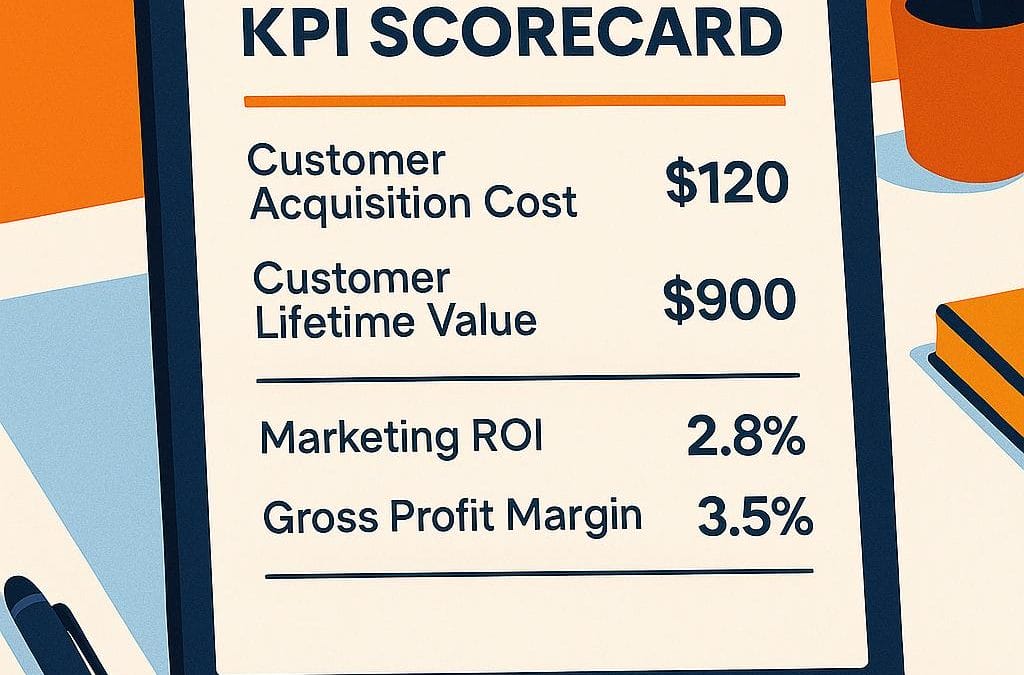The top 6 of the metrics that matter
Part 3 of the “Marketing as a Profit Center” Series
In the first two articles of our series, we established that marketing must move beyond vague goals like “brand awareness” or “engagement.” To become a true profit center, marketing must deliver measurable results tied to incremental sales and bottom-line profitability.
We explored how marketing campaigns should be grounded in break-even analysis, and how to distinguish sales that are truly incremental from those that would’ve occurred anyway.
Now, we focus in on an essential step we discussed in part 2: measuring marketing success with the right metrics.
Why Metrics Matter: Turning Strategy into Evidence
Often, companies base marketing decisions on intuition or legacy practices like setting budgets based on past revenue percentages instead of desired profit outcomes. Once marketing is expected to generate break-even or better performance, the next logical question is: How do we track that?
The answer lies in Key Performance Indicators (KPIs) that reveal whether a campaign is working, and why.
Good KPIs do more than measure output; they link specific details of operating performance to business outcomes. And when aligned to product mix, customer behavior and cost structures, KPIs provide clear, confident answers to the question: Is this marketing effort making us money?
Essential KPI Metrics for Marketing Profitability
Following are 6 key metrics every B-To-C business should track to understand and improve marketing ROI. One can find others more appropriate for B-to-B operations, but we’ll stick to consumer-facing for this example.
- Customer Acquisition Cost (CAC)
Purpose: Measures marketing efficiency. Lower CAC = better ROI.
Formula: Total marketing spend ÷ number of new customers acquired - Customer Lifetime Value (CLTV or LTV)
Purpose: Indicates long-term value of acquired customers.
Formula: Average order value × purchase frequency × length of customer relationship - Marketing ROI (MROI)
Purpose: Shows how well marketing converts into revenue.
Formula: (Revenue from marketing – Marketing cost) ÷ Marketing cost - Gross Profit Margin
Purpose: Measures profitability before fixed expenses.
Formula: (Revenue – Cost of Goods Sold) ÷ Revenue - Net Profit Margin
Purpose: Final indicator of bottom-line performance.
Formula: Net Income ÷ Revenue - Return on Ad Spend (ROAS)
Purpose: Measures revenue generated for every dollar spent on advertising.
Formula: Revenue from ads ÷ Cost of ads
Building a KPI Dashboard: Making Metrics Actionable
Once KPIs are defined, build a dashboard to organize and communicate them to your team. Following are 4 features of an effective KPI dashboard.
- Campaign Comparisons: Show historical vs. current performance side-by-side to identify trends.
- Product Mix Segmentation: Break down performance by product or service, highlighting where marketing is generating the most profit.
- Channel Performance: Compare performance across platforms (email, social, search, direct outreach, etc.) to reallocate budget accordingly.
- Custom Views: Tailor dashboards for different stakeholders; e.g. finance might want CAC and CLV, while marketing may want ROAS and conversions.
Every campaign generates insight. Use your dashboard and KPIs to refine segmentation, messaging, timing, and budget allocation in future campaigns.
Sustaining a Profit-Centric Marketing Approach
As we close this series, the path forward is clear:
- Align marketing efforts with financial outcomes.
Every campaign should have a defined break-even point and profitability target. - Demonstrate return on marketing investments.
Use attribution and cost metrics to validate what’s working. - Use real, revenue-driving KPIs—not vanity metrics.
Focus on conversions, CLV, ROAS, and customer behaviors that link directly to profit. - Continuously optimize based on performance data.
Make marketing a dynamic, responsive tool for growth.
Marketing should be a strategic lever for profit – far more than clever tactics. With the right metrics, tools and mindset, more than just a cost center— the marketing function becomes a true engine of business growth.
Ready to reframe your Marketing Approach?
Let’s work together to turn your marketing into a measurable, high-performance profit center.
Contact us to learn more.

